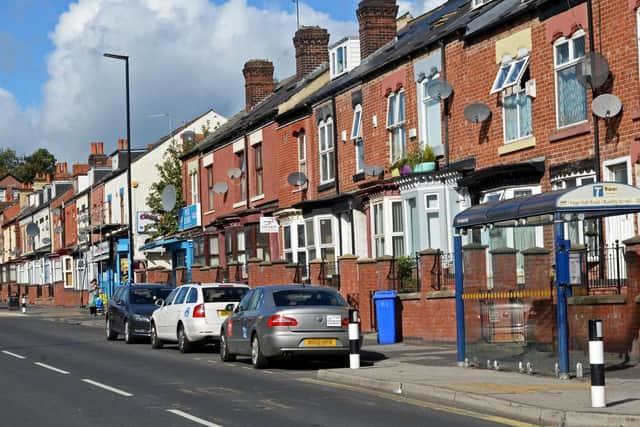Sheffield councillor speaks out on 'distressing' coronavirus death rate in deprived city district
and live on Freeview channel 276
According to data released last week, 18 people in Crabtree and Fir Vale have died from covid-19 since the epidemic began in March.
Parts of the north Sheffield suburb are home to a large Roma population, some of whom have been seen flouting the strict lockdown rules imposed by the Government.
Advertisement
Hide AdAdvertisement
Hide AdHowever, councillor for the area Mark Jones, who is also Sheffield Council’s deputy leader, said many factors needed to be taken into consideration when analysing the district’s alarming figures.
“It is distressing but it is not all to do with social distancing,” he said.
“Crabtree and Fir Vale covers a large area including Earl Marshall Road and Whiteways Road and has people from white British backgrounds as well as people of Kashmiri, Yemeni and Somali heritage.
“We’ve seen that people with health problems are more likely to die from covid and black and minority ethnic populations often have high numbers of people with diabetes and respiratory problems.
Advertisement
Hide AdAdvertisement
Hide Ad“Also, some in black and minority ethnic communities live in large family groups under one roof and many work in health and social care so could be bringing it back to their families.


“We do need to work hard to make sure social distancing is observed and respected but it is not always a straight forward picture.”
Councillor Jones also said that figures made clear the effect poverty and overcrowding was having on coronavirus at a city-wide level.
He said: “Life expectancy in Burngreave is 10 to 20 years less than in other parts of the city so it is no coincidence that we should also see a high figure for covid.
Advertisement
Hide AdAdvertisement
Hide Ad“We have been focused as a city on closing the gaps but we are not making headway. This is another indicator that people’s life chances are restricted on the basis of where they live.
“There is only so long that we can choose to ignore it. Those with the least are paying the highest price again.”